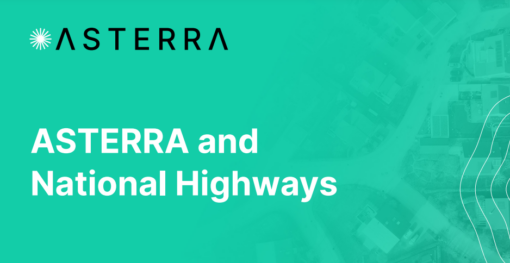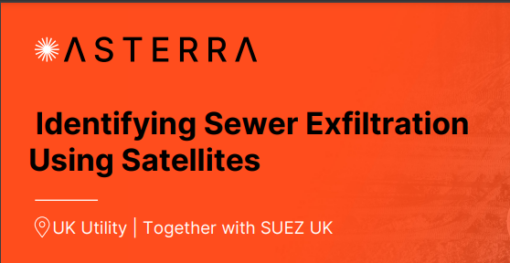Originally published in the TexasWET in November 2020.
The Issue: Water Main Leaks
Hundreds of billions of dollars will be spent to replace pipe mains over the next 25 years. In the U.S. alone, more than 240,000 water main leaks occur each year, excluding non-surfaced leaks. A typical system has a water loss rate of 15%
New Braunfels Utilities (NBU) is located in the greater San Antonio area of Texas. The municipal water system consists of 573 miles of San Antonio water main and has a service territory of 88 square miles located in Comal and Guadalupe counties. In FY2018, NBU served a population of 84,200 through 39,060 service connections. An average of 13.3 million gallons per day (MGD) is supplied to the system with a net sales volume of 10.9 MGD. This equates to a non-revenue water (NRW) volume of 2.4 MGD or 18%.
NBU has a goal to reduce NRW and has tried various technologies. A legacy program – consisting of a five-year, full system, traditional boots-on-the-ground (BOTG) survey – was conducted between FY2014 and FY2018. The results obtained using this approach did not significantly impact NRW thus alternative options were investigated.
Between August 2018 and July 2019, a new program using the Utilis satellite radar remote survey technology was deployed at NBU.
The Role of ASTERRA
Utilis uses satellite imaging to survey large areas and collect and analyze backscattered radar signals. These signals can be interpreted using a proprietary algorithm to determine an indicator of potable water main and pipeline leaks. The algorithm identifies subsurface signals that are consistent with a specific dielectric constant that relates to potable water. These signals are overlaid with a distribution system map to identify Likely Leaking Locations (LLLs) that should be investigated by BOTG field crews to find and pinpoint leaks. This technology can be successfully used on all types of pipe, e.g. metal or plastic, and on all sizes of pipe. Additionally, the service is completely remote and nonintrusive and is equally effective in rural or urban areas.
Four satellite images were collected and analyzed during the study period. Between 6 and 8% of the total service area water main and pipeline length was highlighted for inspection pursuant to each image. NBU organized and executed the workflow in such a manner as to allow for a detailed analysis of the results from a technical and value perspective. The satellite images were spread out quarterly so that crews could be deployed in a systematic manner not overwhelming the staffing levels required. All LLLs provided by the satellite imagery were inspected, Utilis best field practices were followed, and all identified leaks were repaired, and leakage rates were calculated during repair
NBU crews spent 56 working days performing physical inspections of the LLLs, searching for the origins of the leak signals. A total of 229 leaks were located and pinpointed. To estimate the volume of water loss and thus the value of fixing the leak, the leak flow rate was multiplied by the duration defined by its designation. NBU determines the leak type when it is uncovered and estimates the leak flow rate when it is repaired. The calculated leak volumes from NBU side leaks averaged 8.7 gallons per minute (GPM). The NBU side leaks are defined as either identifiable or unidentifiable in order to measure Utilis’s value-add to their particular system setting. Unidentifiable leaks are those that were determined impossible to find with traditional methods and only possible using the Utilis method. The leak duration for identifiable leaks was set at 45 days or 1.5 months since Utilis surveys and subsequent field inspections are performed quarterly; therefore, the average duration of the leak, if evenly distributed over the three-month period, is half that time. For the unidentifiable leaks, the duration was valued at 2.5 years or 30 months. NBU historically could survey and inspect only 20% of the full system per year, thus taking five years to inspect the entire system; therefore, the leak duration was set at half the five years or 30 months.
Of the 229 water main leaks identified, 128 were customer side and 101 were NBU side – 36 of those being deemed unidentifiable. Altogether it was calculated that the total NBU side’s real water loss, due to these leaks, was 48.7 million gallons.
Based on the fact that 56 crew days were required to identify 48.7 MG of real water loss, it can be calculated that for each day a crew spent in the field searching for leaking water main 870,000 gallons were identified and saved. This shows the value of allocating human resources efforts to leak detection. Another way to measure the value proposition of the program is to calculate the marginal cost of the new, recovered, water main supply due to identifying real water losses in the system. The cost of water production for NBU is $4.52 per 1000 gallons. The total cost of the Utilis’ directed service was $155,400, which includes the cost of the satellite survey and analysis and the crew BOTG field inspection costs. Thus, the marginal cost of a new supply is $3.19 per 1000 gallons. This is a lower cost than the cost of production thus showing a lower marginal cost of this new supply.
The return on investment (ROI) pursuant to this program is attractive. The total cost of service was $155,400. The value of the real water loss recovered is $220,120. The operating budget savings are calculated to be $146,400, based on the reduction in labor and cost of a truck roll between the traditional program and the Utilis program; therefore, the total benefit is $366,500. This equates to a simple payback of five months and an ROI of 136%.
This project shows the value of using the Utilis satellite survey program to identify LLLs where inspections can be concentrated. Approximately 7% of the system was inspected for each satellite image. Crew time is maximized as is locating leak sources that can be quickly repaired resulting in reducing real water losses and saving money. NBU is continuing the program in 2020 and is achieving consistent results.
Utilis is now offering its services to small and rural utilities so they can achieve the same effective results as larger and urban utilities at a proportional cost. The satellite surveys an area of 1,200 square miles. The image and analysis can be shared by multiple utilities in the same area, thus reducing the overall cost to all. In early 2020, 12 utilities surrounding Green Bay, Wisconsin teamed up to take advantage of this program. The image covering the NBU area also contains many smaller utilities that can realize benefits from this program.


